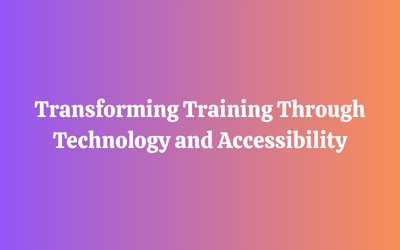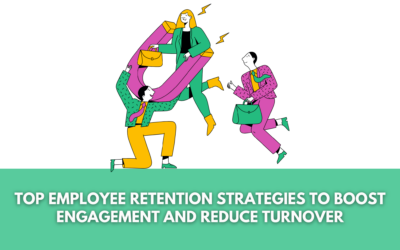Internal mobility: what it is, and best practices
Internal mobility should be at the top of every HR professional’s thoughts as more and more businesses struggle with employee retention and turnover.
In general, a lack of career advancement chances is a major factor in why individuals quit a company. Your high performers will be discouraged from looking for chances elsewhere if you provide them with options for vertical and lateral movement within your organization, supported by opportunities for professional development, training, and upskilling.
What is internal mobility?
To use talent within your organization, internal mobility is essential. The majority of businesses, however, frequently overlook their most talented current staff members in favor of focusing solely on outside talent in the hopes of making the unicorn hiring that will catapult their company to new heights.
Sometimes the excellent talent you are working so hard to uncover may already be employed by your company, so there may be no need to go through the formalities of external recruitment.
The Great Resignation and the present economic crisis have caused many firms to reconsider their hiring and retention strategies. How to prevent their best employees from leaving executive teams is one of their top priorities, according to research. Due to this, internal mobility is now of utmost importance for maintaining an organization’s success and fostering future growth.
The likelihood that top performers may look for opportunities elsewhere will be reduced if you provide your staff with options for vertical and lateral movement supported by professional development, training, and up-skilling opportunities.
Why is internal mobility important in 2023 (and beyond?)
It takes a lot of effort, money, and time to hire new personnel. Finding the ideal people to fill their open positions is something that many organizations are now having difficulty with. They neglect the possibility that they already possess the necessary talent but have not yet acknowledged it.
Internal mobility or talent mobility enters the picture here. It assists businesses in repurposing valuable personnel while reducing the time and expense of replacing departing staff.
In today’s market, responsibilities and skills are in constant flux, which makes it challenging for workers to plan their career pathways. Therefore, if your company still places employees in “boxes,” you are limiting both their success and it.
Let’s say you’re committed to improving your company’s adaptability to the volatile environment we currently face. In that instance, you should assess the skill levels of your employees and consider how to move skills around as needed to address current business issues.
The need for change, new chances for growth, and greater flexibility are what propelled the Great Resignation. Because they are more informed, employees are willing to leave a job if it doesn’t allow them to pursue their professional and personal goals.
If your business does not have the flexibility to expand and nurture people, your retention rates will drastically drop. Understanding the significance of internal mobility will first aid in understanding the essential concerns of the topic.
Some of these benefits include:
- Changed workplace demographics. The two largest age groups in the workforce right now are Millennials and Generation Z. In comparison to their older coworkers, these experts typically stay with firms for relatively shorter periods. These generations prioritize possibilities for growth or the lack thereof. To retain these employees over the long term, internal mobility options are crucial.
- The top priority is still career promotion. In a recent Gallup survey, the most common reason employees leave their jobs was a lack of career advancement. In the same survey, workers who felt that their managers supported their professional growth were 92% more likely to still be employed by the company a year later. Internal mobility is undoubtedly a top concern for your employees. It ought to be for you as well.
- The majority of hiring is done to fill open positions. 95% of American hiring is done to fill open positions, according to Labour Statistics. This means that rather than finding new talent to advance the organization, recruiters are spending the majority of their time and resources replacing existing employees and abilities. That represents a significant waste of resources and a clear indicator of problems with employee development and retention.
- There is a wealth of untapped talent at work. Almost every company has workers who, for one reason or another, are not performing to their full capacity. This is frequently due to a failure to recognize and develop potential. Companies that deliberately implement coaching and mentoring programs and integrate them into growth and development strategies can use this potential to advance the business.
- There is fierce rivalry for talent. The talent market is currently very competitive, depending on your industry in 2021. This is made easier by the move to remote work, which (again, depending on the business) is offering employees more options than they had before the pandemic. Companies that don’t prioritize internal mobility struggle with this. The Great Resignation comes to mind. For those who are, this is a fantastic chance to develop and hold on to your best workers even while other businesses may be losing them. All it takes is a conscious effort to promote growth, professional development, and upskilling.
The main message from each of the aforementioned issues is that employees may not necessarily desire to quit your company. However, if your business isn’t aggressively promoting internal mobility and progress, they can feel as though they have no choice but to quit.
It’s probably your responsibility to give your staff a reason to stay if you’re reading this. Let’s discuss how to accomplish it.
What kinds of internal mobility are there?
Most people’s initial thought when reading the notion of internal mobility is promotion. However, there are a variety of ways that people might move within a company and experience growth and promotion.
The different internal mobility strategies that organizations might use are as follows:
Vertical movement
The employee goes up the hierarchy to a higher job class, frequently with more duties and a better salary within the same department, in this sort of mobility. Additionally, status and perks could change as a result.
An effective technique to increase employee satisfaction, engagement, morale, and productivity is to move up the pay scale. This is typically done when someone performs well. The positive message that their efforts will be acknowledged and that your company promotes internal mobility is conveyed to other employees when they witness their coworkers receiving praise for their hard work.
Upward mobility is another name for vertical mobility, which is mostly focused on performance and benchmarking. Promotion need not be cross-functional, though, to be beneficial. For instance, the nature of the work is unaffected by promotion from the marketing supervisor to the marketing manager. Nevertheless, the new role may allow more individuals to take advantage of your knowledge and abilities.
Lateral movement
Role-to-role mobility, or lateral mobility, is the term for a work shift in which an individual switches from one position to another without significant changes to their perks or hierarchy.
In this instance, the worker is merely transferring their existing talents to the new position. Although it might not seem like much, lateral movement can nevertheless be advantageous for both your business and staff. Employees are exposed to fresh problems and given the chance to try out various jobs while putting their understanding of your company to use.
At the same time, it diversifies your internal talent pool so that hiring managers won’t need to look outside the company for candidates for positions that already have qualified applicants.
Mobility based on projects
As the name implies, project-based mobility is carried out to achieve a pressing shared objective. To foster innovation, it brings together groups of people or employees with various levels of functional competence.
With project-based mobility, staff members can actively participate in initiatives that often fall outside of their department’s and workflow’s purview. To maximize their internal talent, organizations should implement this strategy. Employees might request to engage in various projects within the organization rather than requesting a job change.
To contribute to the immediate organizational goal, employees from various departments and jobs have the chance to work together and apply abilities that they might not otherwise use in a typical day. Role-to-role mobility enhances interdepartmental collaboration and communication, fosters skill development, and increases productivity.
Demotion
This kind of mobility has a bad reputation because it’s typically connected to subpar performance. When an employee is demoted, as opposed to promoting, they are moved to a lesser level of employment.
Demotions, however, are not only applied to underperforming workers. Even for lower employment levels, it is still a tool to assist individuals in acquiring the knowledge and expertise they lack in the workplace. Employees may request role changes so they can concentrate on other personal matters like parenting, attending school, or providing care.
Transfers
A transfer is when an employee moves from one position to another without a significant change to their responsibilities, duties, or pay. It can entail relocating to a different organization’s department or location.
Internal mobility tactics and guidelines
Before diving into tactics and best practices for internal mobility, let’s take a step back and examine some potential challenges.
The following are the top three:
- Assumptions regarding the requirements for success. Hiring managers could already have an understanding of what it will take for an applicant to be successful in a certain role. That presumption might not line up with what they know or what they’ve observed from the workers nearby. As a result, that manager is more inclined to seek out outside talent than to see promise in a current team member for that position.
- Not wanting to look unfaithful, employees. Staff members may be reluctant to express a desire in leaving their current positions. This may be due to apprehension of coming off as unfaithful to their manager or unappreciative of their existing position. In these circumstances, otherwise, qualified workers will be passed over as a result of a basic lack of faith in the system.
- Prioritize current abilities over prospective. Instead of focusing on a candidate’s or employee’s potential, recruiters and hiring managers frequently focus on the candidate’s or employee’s current skills. As a result, they are more likely to employ an outsider who can show the needed skill set. This might lead to resentment since it ignores current employees who might be interested in gaining those abilities.
These three challenges could all have a long history inside an organization. They will need to be dealt with using a methodical and planned approach that not only supports but also rewards internal development and mobility.
Best practices for internal mobility are applicable in this situation. Now let’s examine those.
1. Dispel the stigma associated with internal mobility
Your organization must first and foremost establish that internal mobility is not just permissible but also encouraged.
From the top down, be open and honest with your people about the advantages of internal mobility inside and between departments. Encourage managers to discuss internal prospects and career options with their direct reporting. When staff members change internally, let everyone know and offer your congratulations on the new position. Make it obvious that each employee has the option to look for new internal possibilities.
Making internal mobility commonplace in your organization rather than a taboo subject is the aim here.
2. Give your middle management more control
Employees who might desire to relocate internally should speak with their managers first. As a result, their work can be challenging. They must possess both people management skills and subject matter expertise to recognize and develop their direct reports’ potential.
You must help your middle managers if internal mobility is to be a top priority at your company. This entails giving coaching and training in skill evaluation, mentorship, and people management.
Additionally, it entails making middle management aware of the need for internal mobility and providing them with the authority and resources necessary to develop their workforce.
3. Establish a plan for internal mobility
The intersection of your internal mobility strategy and all the other best practices mentioned here is where the action is. This is the point at which making a “deliberate” attempt to promote internal mobility bears fruit.
Although no two tactics will be identical, they ought to contain:
- Proactive gap analysis to determine the skills you now possess, the ones you need, and the sources from which they are most likely to come.
- A campaign to promote internal mobility through communication.
- A procedure that employees should follow if they’re interested in internal positions or wish to rise the corporate ladder. The amount of people you would like to see migrate internally each year is one of the trackable KPIs.
Managers can find and develop high-potential personnel with the aid of training and mentoring programs.
The goal of this strategy is to create a cohesive internal mobility program that outlines how employees can move up or down within your company.
4. Provide staff with career paths
Every employee in your company should ideally understand what the next phase of their professional development will entail at your business and what they must do to get there.
Typically, this begins with giving managers the authority to collaborate with their people to create personalized development paths, personal objectives, and learning strategies. These ought to correspond with the employee’s unambiguous “next step” in their career, whether that be a promotion or a lateral move.
If you do this, you must commend employees for achieving their objectives. This entails granting promotions, raises, or new duties.
5. Prioritise education and growth.
Employees advance to the point where they can move internally through learning and development. Therefore, you should work to establish and promote a culture of continuous learning at your company to increase the frequency of internal moves.
That implies:
- The necessary L&D resources and materials
- Promoting professional growth and upskilling among employees and rewarding them for it
- Disseminating the importance of L&D
L&D is one of the finest ways to make sure that your company keeps moving forward in terms of creativity and capabilities, and it will also assist to increase long-term retention among your top personnel.
6. Adopt a policy of never using outside hiring
Organizations all too frequently adopt the default position that they must hire external talent to fill leadership and skill shortfalls. While that might be true in some circumstances, it ignores the huge pool of internal applicants who might be competent.
If internal mobility is a top concern, you should add a stage to the beginning of your talent acquisition process to alert current employees to opportunities. Make it clear what is expected of candidates in terms of knowledge and abilities, and encourage those who feel they could be a good fit to apply.
Your efforts to normalize internal mobility and encourage managers to spot talent have paid off in this area. This additional step may lead to the presentation of an inside candidate who has been vying for the same position you’re wanting to fill.
If your internal recruitment efforts are successful, you can avoid the costs associated with finding, vetting, and onboarding new candidates while also rewarding a valuable employee with a new role. The internal applicant will be significantly more productive right away because they are already familiar with your business, its culture, and its workflows.
7. Use the proper technology.
Last but not least, to support internal mobility at scale, you need to use the appropriate technologies.
Ideally, your tech stack should enable you to:
- Make a job board for internal use.
- Assemble and evaluate internal candidates
- Assessing and monitoring internal candidates based on their performance and competencies
- Sync with an L&D platform to provide continual training and skill development
Leading HR technology analyst Josh Bersin refers to this technology as “your internal LinkedIn inside your organization – with recruiting features, training, and mentoring all included.”
Why should your organization’s strategy include internal mobility?
Mobility within an organization benefits both employees and employers. As they transition into positions they are passionate about, your employees pick up new abilities, which has a good effect on the success of your company.
We outline some of the advantages connected with successfully implementing internal mobility to comprehend why it is a top priority among executives:
Favors the retention of talent
Retention is the main benefit of an effective internal mobility strategy. LinkedIn claims that businesses that invest in internal mobility strategies see an average employee retention rate that is almost twice as high.
When workers are aware of opportunities for career advancement, they will stay with your company longer. Internal mobility shows prospective workers and current employees that you value career aspirations and growth and are willing to invest in them.
Increases participation and morale
Prioritizing your present staff for open positions demonstrates that you cherish and believe in them. This strategy will increase their involvement and morale while strengthening their sense of belonging to the organization.
Employees who feel appreciated and supported approach their work with a positive attitude, which results in increased output and performance.
People are also more excited and driven to perform at their best when allowed to learn new skills and transfer into professions in which they have a strong interest. Additionally, it provides a sense of accomplishment, enhancing job satisfaction and fostering positive worker experiences.
Increases cross-functional cooperation
To create an agile environment where employees may try on various positions, take on various projects, test and acquire new abilities, and advance either laterally or vertically in their careers, talent mobility is essential.
Cross-collaboration makes the best use of the talent already present in your company and, more crucially, provides an opportunity for your team to bridge skill shortages without having to bring in outside help.
Cross-functional collaboration can help your company develop a varied workforce and provide employees the chance to identify their strengths and areas of passion.
Cost-effective
External hiring is costly and time-consuming. With the cost of downtime from having a position remain open while you wait to fill it excluded, the average cost of onboarding a new employee is estimated to be close to $4700.
However, if you were to hire internally, all of these difficulties might be avoided. Not only will you save money and time on the hiring process, but you’ll also have the advantage of hiring someone already familiar with your company’s culture.
To attract top personnel in the current, fiercely competitive industry, more is required. To stay ahead of the competition, organizations must also update their methods for attracting and keeping talent.
The route of a career no longer follows a straight line; it is now exceedingly fluid and unexpected. Therefore, by promoting from within and practicing internal mobility, you are offering employees the opportunity to follow their passions, advance their abilities, and try something new.
Learn More
Our News
- AI
- Animations
- Articulate
- Articulate 360
- Articulate Engage
- Articulate Live
- Articulate Presenter
- Articulate Quizmaker
- Articulate Replay
- Articulate Review
- Articulate Storyline
- Articulate Storyline 3
- Articulate Studio
- bite sized learning
- Characters
- Content Library
- Corporate Communication
- E-Learning
- e-Learning Authoring Tools
- Employee Engagement
- Game-Based Learning
- Gamification
- Gamiflexer
- Go Sales
- Healthcare
- Instructional Design
- Interactivity
- Knowledge Transfer
- L&D Trends
- Learning
- Learning & Development
- Learning Experience platform
- Learning Management System
- LMS
- LXP
- Microlearning
- mLearning
- Mobile Learning
- Nugget Learning
- Online Training
- Peek
- Performance Support
- Preso
- Quiz and Assessment Platform
- Replay 360
- Rise
- SCORM
- Screen Capture
- Software
- Storyline 360
- Studio 360
- Training Management
- Trainings
- Uncategorized




